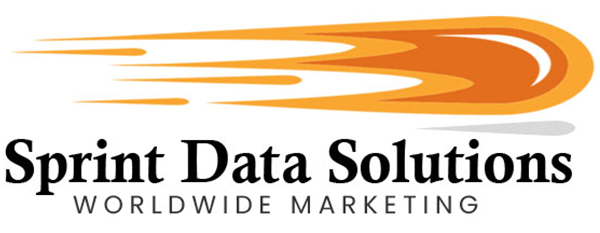Insurance Becomes More Important In Times Of Volatility
nsurance has become one of the most essential safety nets in modern society, perfectly embodying the philosophy, “It’s better to have it and not need it than to need it and not have it.” Life is unpredictable, and accidents—whether minor or catastrophic—can impose significant emotional and financial burdens. Individuals and businesses alike may find themselves ill-equipped to manage the often staggering costs of medical care, property repair, or liability claims. This is where insurance steps in as a vital buffer. By paying a monthly or annual premium, policyholders gain access to financial protection that can make a crucial difference when misfortune strikes. Years of small, seemingly routine payments are transformed into a robust safety net when coverage is triggered.
In many instances, insurance isn’t merely recommended—it’s legally required. For example, nearly every U.S. state mandates a minimum level of auto insurance before a vehicle can be driven on public roads. Health insurance is increasingly tied to employment or subsidized through government programs, and home insurance is often a condition for securing a mortgage. These mandates reflect how central insurance has become to the infrastructure of responsible personal and business finance. Despite this, many people view insurance as a necessary but uninspiring expense—important but easily overlooked, much like eating vegetables for health. It’s good for you, yet not always appealing to deal with.
This is precisely where intelligent marketing and education can make a substantial impact. Most consumers and even some decision-makers within businesses do not take the time to deeply analyze insurance offerings. They often stick with familiar providers or policies without realizing that better options may exist—options that offer more tailored coverage, fewer exclusions, or better value for the premium paid. Clear, engaging, and transparent communication can reveal these differences and uncover hidden costs or gaps in current policies. By explaining not only what is covered but how and why it matters in real-life scenarios, marketers can empower people to make smarter choices—either by upgrading their current coverage or protecting themselves where they previously had no safety net at all. In doing so, insurance goes from being a background necessity to a proactive, strategic safeguard for both individuals and organizations.

Who Benefits?
There are numerous types of insurance products available to meet the diverse needs of both individual consumers and businesses across the United States. For consumers, key areas include auto insurance, which remains essential due to state requirements and the high volume of vehicle ownership; health insurance, particularly in light of rising medical costs and a growing focus on preventive care; homeowners and renters insurance, which protect against property loss and liability; and life insurance, which offers financial security for families and beneficiaries. Specialty policies such as pet insurance, travel insurance, and identity theft protection are also gaining traction as Americans become more aware of the benefits of niche coverage.
On the business side, opportunities are equally diverse. Small and large enterprises alike require commercial property insurance to protect physical assets, liability insurance to safeguard against lawsuits, and workers’ compensation insurance to meet state labor requirements and support injured employees. Cybersecurity insurance is an emerging necessity as companies face increasing threats from data breaches and cyberattacks. In sectors like construction, manufacturing, and transportation, industry-specific policies—such as contractor’s liability, product liability, and fleet insurance—are vital. Moreover, professional services benefit from errors and omissions (E&O) insurance, while restaurants and hospitality providers often need liquor liability and food contamination coverage. Each of these represents a targeted opportunity to offer tailored insurance solutions that address real risks and align with the evolving needs of today’s marketplace.
Health Insurance
Health insurance remains one of the most pressing and emotionally charged concerns in the minds of many Americans. Despite the United States being home to some of the most groundbreaking medical technologies and highly trained specialists in the world, these life-saving treatments often come with astronomical price tags. For countless individuals—particularly those who are self-employed, working part-time, or employed in sectors that don’t provide robust health benefits—the financial burden of a serious illness or medical emergency can be devastating. The cost of treatment can exceed hundreds of thousands of dollars, potentially pushing families into long-term debt, bankruptcy, or even forcing them to forgo necessary care altogether.
While the introduction of the Affordable Care Act (ACA) brought much-needed reforms by expanding coverage and protecting individuals with pre-existing conditions, it has not fully resolved the systemic challenges plaguing the American healthcare system. Premiums remain high for many, deductibles can be steep, and access to certain specialists or treatments may still be limited depending on the plan. This has led to a growing sense of dissatisfaction and frustration, fueling the demand for better, more affordable alternatives. From health-sharing ministries and high-deductible plans paired with Health Savings Accounts (HSAs) to innovative telehealth memberships and private insurance cooperatives, Americans are actively exploring new models that promise both affordability and peace of mind. In a climate where anxiety over healthcare costs continues to mount, those who can provide viable solutions—especially those offering both flexibility and transparency—are sure to earn the attention and trust of a concerned public.
Medicare Part B
As a crucial component of healthcare financing for seniors and certain individuals with disabilities, Medicare Part B plays a vital role in covering a broad spectrum of medical services that fall outside the scope of standard hospital care. While public awareness often centers around the high costs of major medical interventions—such as surgeries, cancer treatments like chemotherapy or radiation therapy, or long-term hospitalization—the reality is that everyday healthcare expenses can be just as impactful on a person’s financial well-being. Medicare Part B addresses these routine yet essential needs by covering outpatient care, physician visits, preventative screenings, lab tests, diagnostic imaging, and even some home health services. It also extends to medically necessary equipment such as walkers, blood sugar monitors, and wheelchairs, ensuring patients can maintain their independence and quality of life.
Furthermore, Part B includes coverage for ambulance services and mental health care, recognizing that emotional well-being is an integral part of overall health. Given its focus on the ongoing, often recurring costs of maintaining health, it’s no surprise that consumer interest and concern about Medicare Part B frequently rivals or even exceeds that of private health insurance plans. People want assurance that their regular healthcare needs won’t become financial burdens over time. For marketers and insurers, this creates a unique opportunity: when targeted to the appropriate demographic—primarily seniors aged 65 and older, as well as individuals with qualifying conditions—Medicare Part B-related offerings can generate strong engagement and conversion rates, especially when promoted as a solution to the mounting costs of continuous care. Educating potential enrollees about the nuances of Part B coverage, including premium costs, enrollment timelines, and coordination with other insurance plans, can significantly enhance response rates and trust in the provider.
Life Insurance
While the passing of a loved one is a natural stage in the human experience, its emotional and financial consequences can be deeply destabilizing for those left behind. This is particularly evident when the deceased was the primary source of financial support, covering essential needs like housing, food, and education for dependents—especially children. In such cases, life insurance becomes not just a safeguard, but a critical pillar of security and continuity. As one of the most established forms of insurance, life insurance is widely recognized in the United States. However, despite this familiarity, the intricacies of life insurance often remain unclear to many policyholders. Different types of coverage—term, whole, universal—and a host of conditions, exclusions, and policy “riders” can complicate claims or reduce benefits, sometimes without the policyholder’s full understanding. This opens a valuable opportunity for insurance providers to differentiate themselves. By streamlining coverage, minimizing confusing terms, and reducing or eliminating common pitfalls, providers can offer more transparent, beneficial, and competitive products that better serve clients during life’s most difficult moments.
Variable Annuity Holders
While not strictly insurance, variable annuities are financial products insurance companies can offer. These require either a single large payment or a series of agreed-upon smaller amounts. In exchange, at an appointed time, the tax-deferred funds allocated due to those payments will then be released to the holder or people designated by the holder, such as a spouse or children.
Because of its function more as a retirement or investment fund than strict insurance, there is a broad range of interest in this type of financial product. Certain demographics are always on the lookout for promising variable annuities to consider.
Auto Insurance
While auto insurance is a legal requirement for operating a vehicle in most jurisdictions, not all policies offer the same level of coverage, value, or flexibility. The auto insurance marketplace is vast and often confusing, with a wide range of policy types, add-ons, deductibles, and pricing structures. Larger insurers may entice consumers with bundle discounts—combining auto with home, renters, or life insurance—but these packages don’t always deliver the best value or tailor-made protection. As a result, many drivers unknowingly settle for policies that fail to meet their unique driving habits, vehicle usage, or financial situation. This creates a strong opportunity for insurers to introduce competitive offerings that emphasize transparent pricing, customizable features, and policyholder-centric benefits such as accident forgiveness, flexible deductible options, or rewards for safe driving. With the right product design and customer education, insurers can tap into a large segment of consumers ready to switch to policies that better reflect their individual needs and priorities.
Home Insurance
While home insurance isn’t mandated by law the way auto insurance often is, it can still be functionally mandatory for many homeowners. Financial institutions typically require proof of home insurance before approving a mortgage, making it nearly impossible to complete a home purchase without it. This requirement ensures the lender’s investment is protected in the event of a disaster such as fire, flooding, or theft. As a result, even though legislation doesn’t compel homeowners to carry insurance, market forces and lending conditions effectively do.
The home insurance market is mature and highly competitive, offering a broad spectrum of policies that range from basic coverage to comprehensive protection with valuable add-ons like personal property replacement, liability coverage, and disaster-specific riders. However, many homeowners default to simpler, less inclusive options—especially when bundling with auto or life insurance policies for convenience and perceived cost savings. These bundled packages often lure customers with upfront discounts, even if the actual coverage may not fully meet the homeowner’s long-term needs. The upside is that this creates a significant opportunity for more robust providers: with the right outreach and education, consumers can be shown the benefits of switching to a policy that better protects their home, possessions, and financial well-being—often at a competitive price point.
Renter Insurance
In recent years, insurance providers have increasingly recognized that renters—not just property owners—have significant needs for coverage. Particularly in densely populated urban areas like New York City, where many residents may live their entire lives in rent-controlled or stabilized apartments, the importance of renters insurance has come into sharper focus. These tenants often possess valuable personal property and are equally vulnerable to risks such as fire, theft, water damage, or liability claims. Yet, many remain unaware of the affordable and comprehensive protection renters insurance can provide.
With the ongoing challenges of rising housing costs and economic uncertainty, more individuals and families are choosing to rent rather than own property, resulting in a growing market segment in need of education about their insurance options. Renters insurance not only covers personal belongings but can also include liability protection, coverage for additional living expenses during repairs, and peace of mind in case of unforeseen accidents. With targeted marketing strategies and consumer education initiatives, insurers can successfully reach apartment dwellers and help them understand the value and security that comes with having a tailored insurance policy, ultimately fostering greater financial resilience among urban renters.
Vault Insurance
Storing valuables and important possessions in a secure vault is often seen as the ultimate safeguard—an investment in peace of mind and long-term protection. However, even the most advanced vault systems are not entirely immune to risks such as natural disasters, internal breaches, or highly sophisticated theft. In such instances, the illusion of total safety can be shattered, leaving individuals facing the financial and emotional loss of irreplaceable items, despite significant expenditures on physical security.
This is where vault insurance emerges as a vital layer of comprehensive protection. For those who already recognize the value of safeguarding their possessions, the idea of insuring those assets further becomes a logical next step rather than an unnecessary expense. Vault insurance offers reimbursement or replacement options for covered losses, adding a financial safety net that traditional vaults alone cannot provide. With the right marketing strategy—one that highlights real-world risks, showcases testimonials, and emphasizes the long-term value of layered protection—clients can be encouraged to see vault insurance not just as a smart precaution, but as an essential component of responsible asset management.
Commercial Business Insurance
One of the oldest forms of insurance originated from the need to safeguard valuable cargo transported across treacherous trade routes and vast oceans—an early recognition of the risks inherent in doing business. Today, that same foundational concept has evolved into the modern realm of commercial business insurance, which has grown to encompass a wide array of protections tailored to meet the complex and diverse needs of businesses. Whether it’s a small family-run storefront or a multinational corporation, commercial insurance provides crucial coverage for property, inventory, machinery, liability, cyber risks, business interruption, and more. This breadth of options allows business owners to tailor policies that align precisely with their operational risks and industry-specific exposures. Savvy entrepreneurs understand that in an unpredictable economic and legal climate, comprehensive commercial insurance isn’t just a safety net—it’s a strategic tool that helps ensure long-term resilience and growth. As competition intensifies across markets, demand remains high for policies that not only deliver robust coverage but also offer competitive pricing and adaptability to emerging business challenges.
Personal Property Insurance
Many individuals mistakenly believe that a standard home insurance policy offers comprehensive protection for both the structure and its contents. However, this is often not the case—especially with policies featuring low premiums. While these plans may cover damage to the physical building caused by fire, storms, or other disasters, they frequently provide limited or no coverage for the personal belongings inside, such as electronics, furniture, valuable collections, or sentimental family heirlooms. In the event of theft, water damage, or certain types of accidents, homeowners may find themselves facing significant out-of-pocket costs for replacing or repairing their possessions.
Personal property insurance fills this gap by offering dedicated protection for the contents of a home. It is a crucial form of coverage for anyone who values what’s inside their residence—whether that’s a new computer, antique furnishings, or irreplaceable personal mementos. Importantly, this type of insurance is not limited to property owners; renters can also benefit from it through renters insurance policies that include personal property protection. In some cases, the cumulative value of a home’s contents can exceed the value of the structure itself, especially when factoring in high-end electronics, artwork, or specialty collections. For these reasons, personal property insurance is an essential offering for consumers who understand that true peace of mind requires more than just structural coverage—it requires a comprehensive approach to safeguarding everything that makes a house a home.

Insurance Bond
An insurance bond, while distinct from a traditional insurance policy, serves a similar purpose in providing financial assurance and risk mitigation. A bond acts as a guarantee—typically issued by a surety company—that an individual or organization will fulfill specific obligations, whether contractual, ethical, or financial. Should the bonded party fail to meet those obligations, the bond ensures that compensation is available to the aggrieved party. There are various types of bonds tailored to specific industries and needs, including fidelity bonds, which protect employers from employee dishonesty, and performance or bid bonds, which are crucial in construction and contracting to affirm a company’s commitment and financial ability to complete a project according to agreed terms.
What makes insurance bonds particularly strategic for marketing is their relevance across a broad range of industries and business sizes. From independent contractors needing license bonds to large corporations bidding on multimillion-dollar infrastructure projects, the demand for bonding is consistent and essential. Businesses often seek bonds during critical operational junctures—such as licensing, entering contracts, or scaling services—making them highly receptive to targeted marketing efforts. Educating potential clients on the nuances of bond requirements and offering tailored solutions can position marketers or service providers as trusted partners in these pivotal business moments, unlocking long-term customer value and recurring business.
Business Interruption Insurance
When a residential property is impacted by a disaster, the consequences are often disruptive but rarely result in a complete loss of livelihood—residents may need to secure temporary housing, but their income and employment typically remain unaffected. However, when a disaster strikes a commercial property, the stakes are far higher. The closure of a business not only halts operations but can also jeopardize the financial well-being of the owner, employees, and even customers relying on its services. This is where business interruption insurance becomes essential.
Business interruption insurance is designed to safeguard companies against the financial fallout from unforeseen disruptions. It goes beyond simply covering physical damages by addressing the revenue lost during downtime. Policies often include coverage for ongoing expenses such as loan obligations, rent, payroll, and taxes, ensuring the business can stay afloat while operations are suspended. Some plans even provide assistance with setting up temporary workspaces or relocating to maintain productivity. Just like other forms of insurance, the effectiveness of business interruption coverage lies in its customization—tailoring the right protections to the unique needs, size, and risks of each business ensures that recovery is swift and sustainable.
Fire Insurance
Fire insurance remains one of the most essential and widely recognized forms of property protection. The sheer destructive power of a fire—capable of consuming homes, businesses, and irreplaceable possessions in a matter of minutes—makes it an ever-present concern for property owners. Fire insurance policies offer a financial safety net that can be critical to recovery, helping policyholders rebuild their lives and properties without bearing the entire financial burden alone. This peace of mind is a powerful motivator for many to invest in comprehensive coverage.
However, not all fire insurance policies are created equal. The scope of coverage, the exclusions, and the policy limits can vary significantly between providers. Some insurers may offer only the most basic coverage, excluding secondary damage from smoke, water used to extinguish the flames, or even damages caused by efforts to rescue occupants. Others may cap the reimbursement well below the actual cost of rebuilding or replacing what was lost. For savvy customers seeking greater value, this opens the door to exploring providers that offer more inclusive or competitively priced policies. Insurers that go beyond the standard template—by including additional protections or tailoring plans to specific property risks—can carve out a strong niche in a market that is always receptive to transparency, customization, and fair pricing.
High-Risk Insurance
Insurance is essential for financial protection and peace of mind, but not everyone qualifies for traditional, standard policies. This is where non-standard or “high-risk” insurance plays a vital role. These policies are designed for individuals and property owners who fall outside conventional underwriting guidelines. This includes drivers with multiple traffic violations or past lapses in premium payments, as well as landlords who own vacant properties or buildings they do not intend to occupy. Non-standard insurance fills a critical gap in the market, ensuring that higher-risk clients still have access to necessary coverage. Although this segment may be considered niche, it is both active and valuable. Many individuals and businesses in this category are not looking to avoid insurance—they simply need options tailored to their unique circumstances. With the right approach and targeting, insurers and marketers can successfully connect with these motivated buyers and provide the specialized solutions they need.

How We Can Help
Sprint Data Solutions Worldwide Marketing is a proudly 100% American-owned and operated business, founded by a disabled veteran with a mission to strengthen the nation’s economy through marketing innovation. Originally established as a direct mail marketing company, we have since evolved into a full-service marketing solutions provider, offering comprehensive domestic, continental, and international outreach capabilities. Our expertise spans across both consumer and business sectors, with a strong focus on the insurance industry. We offer meticulously curated contact lists that meet a wide range of campaign needs, ensuring maximum targeting accuracy. Our pricing is competitive, and we distinguish ourselves through the frequent updating and verification of our databases. Leveraging cutting-edge artificial intelligence systems, machine learning technologies, and partnerships with multiple trusted data sources, we ensure our clients receive the most relevant, high-performing leads. At Sprint Data Solutions, we don’t just deliver data—we provide strategic marketing intelligence that drives results.
If your business is seeking qualified insurance prospects segmented by detailed geographic and demographic criteria, we offer robust marketing solutions tailored to your needs. Whether you’re planning outreach through direct mail, phone calls, email campaigns, or SMS/text messaging, our comprehensive and regularly updated databases ensure high deliverability and engagement rates. From targeting specific zip codes to narrowing your audience by age, income, homeownership, or life stage, we help you reach the right people at the right time with precision. Contact us today to discover how our targeted lead lists can drive better results for your insurance marketing campaigns.






